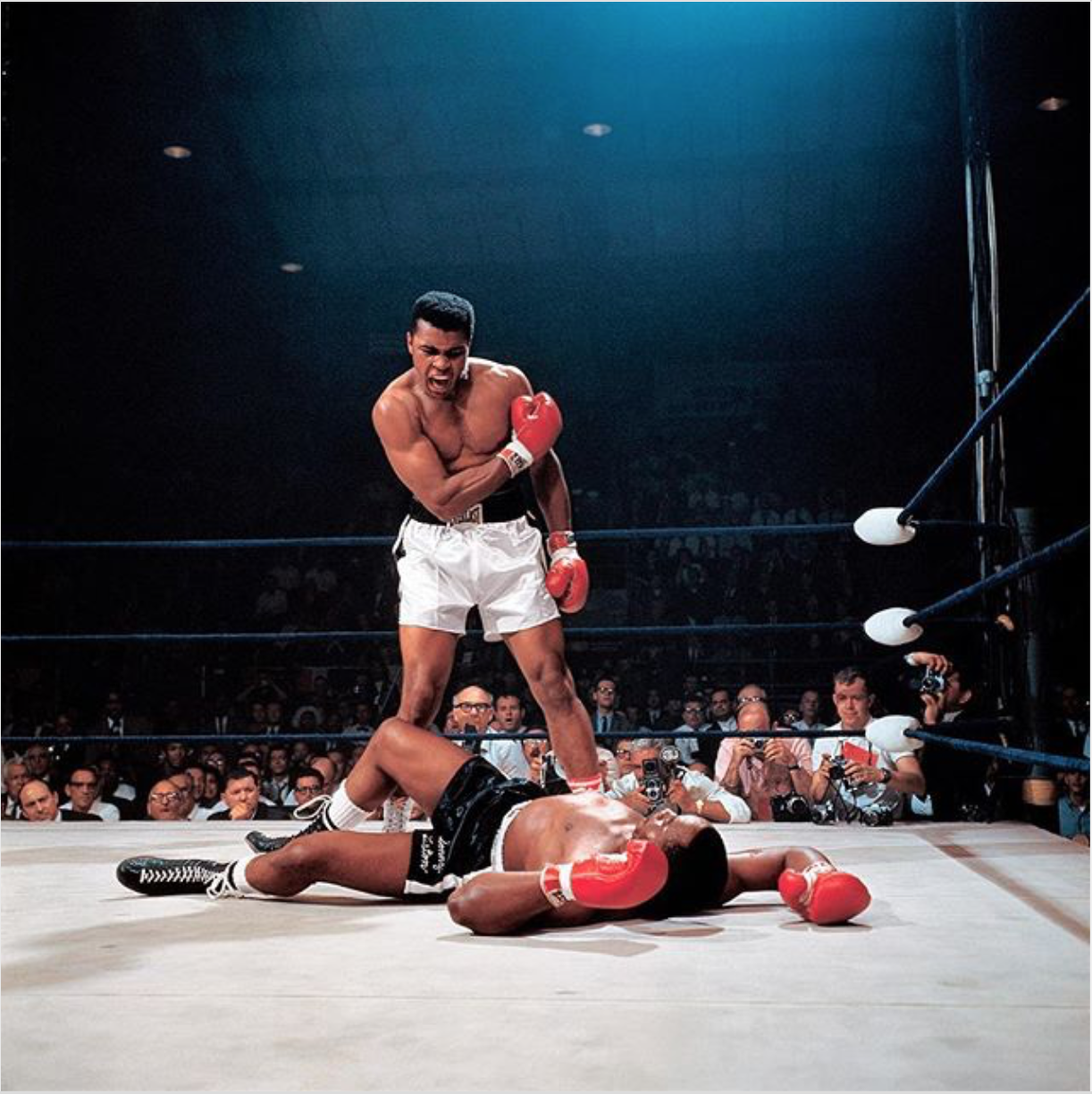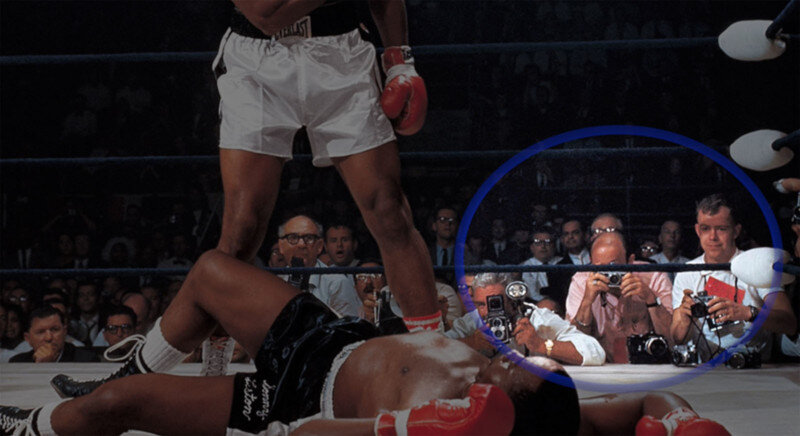Muhammad Ali vs. Sonny Liston — perhaps the greatest sports photo of the century by Neil Leifer
Hello photography fans. Today I want to talk about this particular picture — Muhammad Ali vs. Sonny Liston by Neil Leifer. I am going to take a closer look at the story behind the photograph and why this picture is so iconic.
The photo we are looking at is an iconic sports photograph taken in 1965 by photographer Neil Leifer with his Rolleiflex camera. It is a photo of the greatest heavyweight champion, Muhammad Ali.
Neil Leifer is an American sports photographer and filmmaker. He has shot covers for magazines such as Sports Illustrated, Time, and People. Leifer followed Ali from the beginning of his career to its end. Sports Illustrated published Leifer’s photos on its 170 covers. He is said to be one of the greatest sports photographers of all time. But he was not only a sports photographer. He even said “I like to think of myself as photo journalist, not a sport photographer.”
It was on the 25th of February 1964 in Miami when Cassius Clay beat the reigning heavyweight champion of the world, Sonny Liston. The match was surrounded by expectations since Clay started a psychological war against Liston, calling him “the big ugly bear.” Clay beat Liston in seven rounds after Liston threw in the towel, as he had injured his shoulder and could not continue the fight.
The day after the fight, he announced he was a member of the Nation of Islam or Black Muslims and he converted to Islam. He picked (or was given) the name Muhammad Ali. The media, however, ignored this fact, and the match was advertised as the “Clay-Liston” fight. The rematch took place on May 25, 1965. By the time the match started at 10:40 pm, the ring was already filled with thick blue clouds of smoke, which was not actually blue, but the strobe lights made it look blue when fired through the smoke.
After one minute and 44 seconds, what many called a phantom punch, Liston’s body hit the ground. It was a knock out.
Neil Leifer was positioned on the right side of the ring at the perfect angle. Even though the photo is almost 55 years old, it almost looks like a studio shot. It was mainly thanks to the powerful lights that the studio effect was achieved but also thanks to cigar smoke in the ring.
When we talk about composition, the shot is pretty much perfect. Even nowadays it would be very hard to replicate it, since you cannot position your subjects in sports photography to your liking during an event like this. This photograph is a great example of being in the right spot at the right moment. As you can see, those guys just weren’t so lucky.
Leifer later said “I was obviously in the right seat, but what matters is I didn’t miss. That’s what separates best sports photographers from the ones that are just good — you have to get lucky in sports photography.”
Even though it probably wasn’t intentional, it is a nice moment catching Ali’s hand in this 90 degree angle. Unlike S curves, those sharp 90 degree angles are often used to symbolize strength. It is used not only in photography, but also for example, when posing during a bodybuilder competition. This image enhances Ali’s strength and makes him look like a hero.
Ali’s arm angle in Leifer’s photo (left) and by Panther Sohi (right).
It is actually quite amazing. Only after you see the live footage from the match can you appreciate the moment and the pose Leifer got in this frame. Leifer also had a special flash over the ring, but since his strobes needed a longer time to recharge he had this one opportunity to make the picture.
An interesting thing is the picture was not considered that special at that time. It didn’t’t make the cover of the Sports Illustrated; it was actually on the 4th page. When they entered it in the biggest photo contest of the year held by Encyclopedia Britannica, the University of Missouri pictures of the year, the picture actually did not make to the podium or even get an honorable mention. Leifer said it was probably 10 years before people began thinking it was special.
“The picture became special because Ali became so special.”
At the end of the century, the London Observer devoted an entire issue to the 50 greatest sports pictures of all time. Ali — Liston placed second and Ali – Williams, another brilliant photograph ended up winning the contest.
“The pictures became significant because of who was in them.”
What do you think? Is Ali vs. Liston the greatest sports photo of the century?
If you're interested in learning more, check out this book: "The Best of Leifer" is a stunning collection of photographs by Neil Leifer, who has been capturing major events for publications like Sports Illustrated, Time, Life, and Newsweek since 1960. This book showcases Leifer's artistry, composition, and unerring instinct for photographing just the right moment, evident in the memorable pictures included in this collection.
Some of his best-known images featured in this book include a triumphant Muhammad Ali defeating Sonny Liston, thought to be the best sports picture of all time; a dazzling Kristi Yamaguchi in midair on her way to Olympic gold; Michael "Air" Jordan slam-dunking, and countless other pictures of sports superstars. For decades, Leifer has attended premier sports events, providing us with ringside seats to many of the most exciting competitions of the last half of the 20th century.




